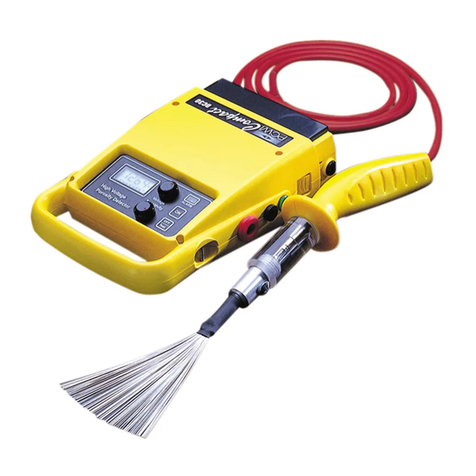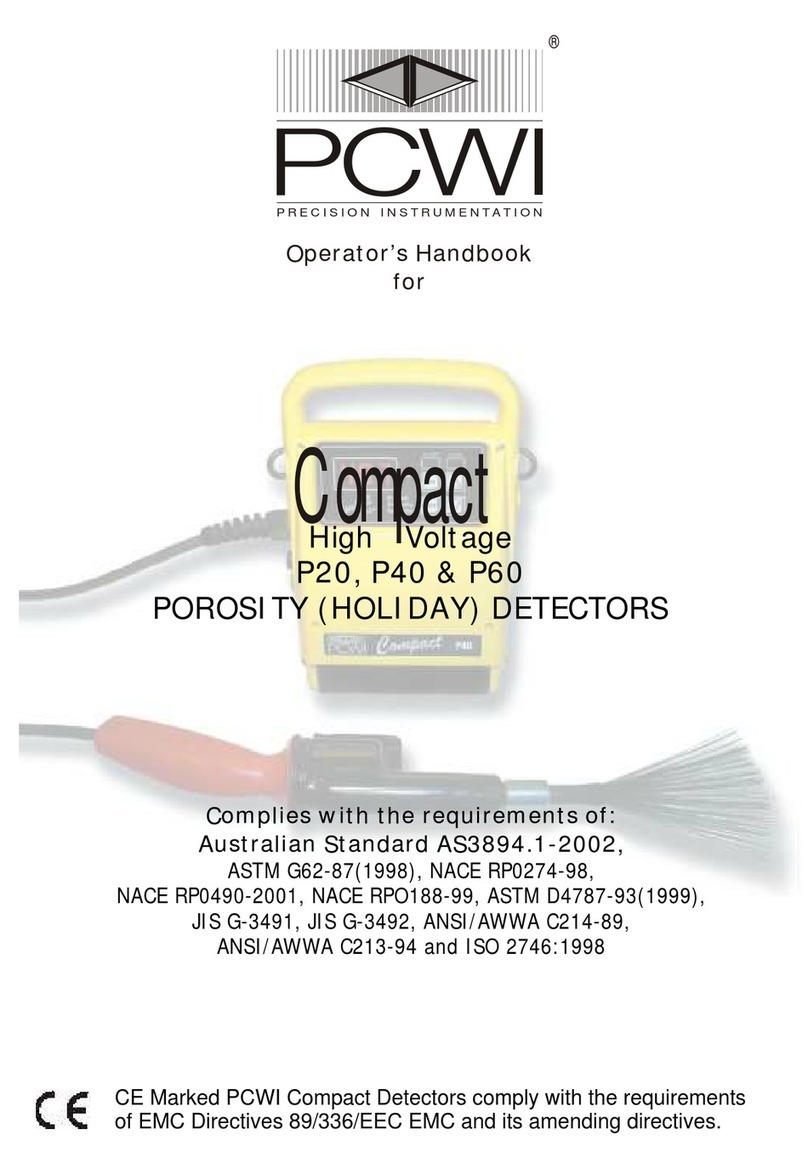
1.0 SAFETY PRECAUTIONS:
All hand-held high voltage test equipment should be operated
byresponsible,trainedandauthorisedpersonnel.
The unit must be earthed to both the item under test and to
ground.
CAUTION
The Detector output can be up to 35,000 volts. Should the
operatoraccidentallymakecontactwiththetestelectrode,they
may experience a mild shock or zap, and in order to avoid this
possibility,thewearingofrubberglovesisrecommended.
Furthermore, the operator should enjoy good health and not
suffer from a cardiac condition. If the operator has a
pacemaker,thentheyshouldnotusethisequipment.
Thisequipmentshouldonlybe used for the purposeforwhichit
was designed, ie: checking the porosity, or electrical
breakdown,ofdielectricorinsulatingmaterials.
It is also recommended that testing should be carried out well
clear of personnel not involved in the testing procedure, or in
such a position whereby the surprise of receiving an electric
shock could cause a related accident, if for example, tests
being carried out close to moving or rotating machinery, or in
such an unstable position that the operator could fall and injure
themselves.
It is recommended that the operator should have an assistant,
toensurethatunauthorisedpersonnelarekeptwellclearofthe
testing area, and generally assist when necessary with the
testingprocedure. Itisalsorecommended thattheDetectornot
be operated within close proximity of sensitive electronic
apparatus,suchascomputerequipment.
DANGER
Donotusethetestequipmentinanycombustibleorflammable
atmosphere, as a test voltage can cause an arc or spark to be
generatedandanexplosioncouldresult.
Always consult the plant or safety officer before carrying out a
testprocedure.
When testing tank internals, be certain the tank does not
containsolventsremainingfromthepaintingprocedure.
ge
sshouldbecured, thickness tested, visuallyinspected
allic substrate of the item to be tested –
robe best
ach to the probe handle.
age control clockwise to the required test voltage.
.
al substrate. nnections).
. Turn alarm sensitivity
f.
ard.
anel of the unit. the unit.
age drops drastically.
A definite flaw should be made in the coating and
act with the surface, gaps in or
ages.
aminated coatings should not be tested until dry
ages).
3
2
www. .com information@itm.com1.800.561.8187































